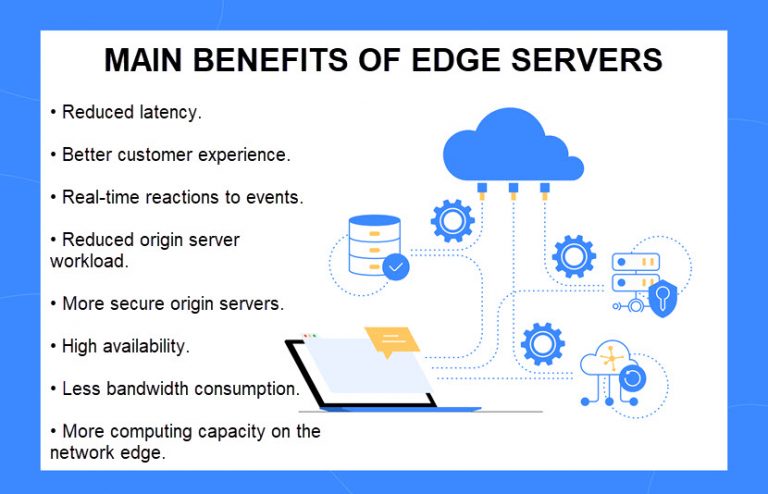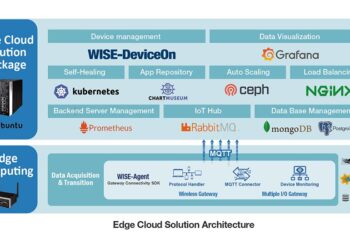What is an Edge Server and How It Enhances Performance? sets the stage for this enthralling narrative, offering readers a glimpse into a story that is rich in detail and brimming with originality from the outset.
The second paragraph provides descriptive and clear information about the topic
Definition of an Edge Server

An edge server is a type of server located closer to the end-users in a network, typically at the edge of the network infrastructure. It acts as an intermediary between the client device and the origin server, helping to optimize the delivery of content and services.
Role of Edge Servers
An edge server plays a crucial role in improving the performance and efficiency of network operations. By caching content closer to the end-users, it reduces latency and speeds up the delivery of data. This is especially important in scenarios where real-time data processing or high-bandwidth applications are involved.
- Edge servers are commonly used in content delivery networks (CDNs) to store and deliver cached content, such as images, videos, and web pages, to users more quickly.
- They also help in load balancing and offloading traffic from the origin server, thereby improving the overall scalability and reliability of the network.
- Edge servers can enhance security by providing a buffer between the client and the main server, helping to mitigate DDoS attacks and other security threats.
Benefits of Edge Servers
Edge servers offer various benefits that contribute to a more efficient and seamless network infrastructure.
- Improved Performance: By reducing latency and optimizing content delivery, edge servers enhance the user experience by providing faster access to data and services.
- Scalability: Edge servers help in distributing workloads and managing traffic spikes effectively, ensuring that the network can handle increased demands without compromising performance.
- Reliability: With edge servers handling a significant portion of the traffic and requests, the network becomes more resilient to failures and disruptions, enhancing overall reliability.
How Edge Servers Enhance Performance
Edge servers play a crucial role in enhancing performance by reducing latency and improving website load times. By bringing content closer to end-users, edge servers help in optimizing content delivery and overall user experience.
Edge Computing and its Impact on Performance
Edge computing refers to processing data closer to the source of data generation rather than relying on a centralized data processing location. This approach significantly reduces latency by minimizing the distance data needs to travel. As a result, edge servers improve performance by ensuring faster response times for users accessing content or services.
- Edge servers enable quicker access to content by caching data at strategic locations closer to end-users. This reduces the time taken to fetch information from distant servers, resulting in faster website load times.
- With edge computing, edge servers can process requests locally, eliminating the need to route data back and forth to centralized servers. This leads to reduced network congestion and quicker response times for users.
- By leveraging edge servers, content providers can customize and optimize content delivery based on the geographical location of users. This localization ensures that users receive content from the nearest server, minimizing latency and enhancing overall performance.
Architecture of Edge Servers

An edge server setup consists of a distributed network of servers strategically positioned at the edge of the network infrastructure, closer to end-users. This architecture helps in reducing latency and improving the overall performance of web applications.
Key Components of an Edge Server Infrastructure
- Edge Caches: These are used to store frequently accessed content closer to users, reducing the need to retrieve data from origin servers.
- Load Balancers: Ensure even distribution of traffic across edge servers, preventing overload and maintaining optimal performance.
- SSL Accelerators: Speed up SSL/TLS encryption and decryption processes, enhancing security without compromising performance.
- Content Delivery Networks (CDNs): Help in efficiently delivering content by caching data at edge locations for quicker access.
- Application Delivery Controllers: Manage and optimize the delivery of applications to users, ensuring a seamless user experience.
Geographical Positioning for Optimal Performance
Edge servers are strategically positioned at various geographical locations to ensure optimal performance. By placing edge servers closer to end-users, the latency is reduced, resulting in faster loading times for web content. This geographical distribution also helps in load balancing and redundancy, ensuring that users have access to content even if one server goes down.
Overall, the architecture of edge servers plays a crucial role in enhancing the performance and reliability of web applications.
Security Features of Edge Servers
When it comes to security, edge servers play a crucial role in enhancing protection against various threats and attacks. Let's dive into the security measures implemented in edge servers and how they help in safeguarding data and applications.
DDoS Attack Protection
- Edge servers act as a shield against Distributed Denial of Service (DDoS) attacks by distributing incoming traffic across multiple edge locations. This helps in reducing the impact of volumetric attacks by absorbing and mitigating malicious traffic before it reaches the origin server.
- By leveraging geographically dispersed edge locations, edge servers can detect and block suspicious traffic closer to the source, preventing overload and downtime of the main server.
-
Edge servers use rate limiting, access control lists, and web application firewalls to filter and block malicious traffic, ensuring uninterrupted service delivery.
Security Protocols
- Edge servers implement various security protocols such as Transport Layer Security (TLS) and Secure Sockets Layer (SSL) to encrypt data in transit and establish secure communication channels between clients and servers.
- HTTP Strict Transport Security (HSTS) is another security protocol used in edge server configurations to enforce secure connections and prevent downgrade attacks.
-
Additionally, edge servers support protocols like IPsec and VPNs for secure data transmission and network communication, safeguarding sensitive information from unauthorized access.
Summary

The concluding paragraph provides a summary and last thoughts in an engaging manner











